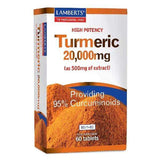What is a STAT dose of a medication?


Related products

What is a STAT dose of a medication?
STAT doses are life-saving heroes in medical emergencies.

The term 'STAT' is derived from the Latin Statim, which means "at once" or "immediately". So, when a doctor prescribes a medication as a STAT dose, the first or a single dose of a drug is given at once and as soon as possible.
The term is commonly used for critical life-saving medications like those used for hypotension and heart diseases. These medications take some time to build up to the therapeutic levels, and a delay in administration results in a delayed onset of action. To further understand, it is essential to know how a prescription works.
Medical prescription: An order tailored to the urgency of the situation
A prescription or a medication order is a written order issued by a licensed healthcare professional. The Collins Dictionary defines it as an order written by the doctor which is given to the pharmacist for the preparation and administration of drugs. In clinical practice, prescriptions are orders that a qualified and registered nurse carries out. Several types of orders in the clinical setting are PRN, routine, one-time, standing, STAT, and titration orders.
PNR order: PNR stands for 'pro re nata', a Latin phrase which means "in the given circumstances". According to the experts at the Hallym University Dongtan Sacred Heart Hospital, it is a prescription which is administered when needed or requested by the patient. The administration is based on clinical signs, e.g., chest pain, nausea, abdominal discomfort, etc. For example, acetaminophen is recommended at the dose rate of 500 mg PO every 4-6 hours only in case of pain (Harvard Health).
Routine order: This order must be followed until it is cancelled by the next. An example is Lisinopril, a medication used to treat hypertension. It is recommended at a dose rate of 10 mg per oral daily.
One-time order: As the name suggests, the medication should be used only once. An example is the IV administration of a prophylactic antibiotic before a surgical procedure.
Standing order: It is known as the 'standard protocol' or the 'order set' and is a set of standardised prescriptions to be implemented in case of clearly defined situations. For example, the patient visiting the clinic complaining of chest pain is given chewable aspirin and then forwarded for ECG.
Titration order: In this order, the dose of medication is progressively decreased or increased by the nursing staff depending upon the patient's clinical picture.
Why is STAT a preferred term?
One might wonder why the term 'STAT' is used rather than simply writing "right now" or "Hurry up". The reason lies in the limited time availability and the established medical tradition.

Most of the medial terms are derived from Latin or Greek and are used as such a tradition. Another reason is that STAT takes much less writing time and is easy for a busy physician, as Saving a few seconds in emergencies is critical.
The STAT and 'right now" carry different meanings. A STAT order means immediately, while a "right now" must be supported by a time frame to carry it out.
How quickly must the STAT order be implemented?
A STAT order means any delay is life-threatening, and quick administration is necessary. The clinicians debate the time frame of order, with most medical men agreeing that it must be carried out within 15 minutes. It means that all other orders in the queue must be postponed, and this order is carried out on priority to resolve the situation immediately. The hospital's blue code highlights the urgency of the problem.
The real-life situations are, however, far from ideal. Dr Hani Abdelaziz and his colleagues at Barnabas Health, USA, noted that, on average, a STAT order is completed in around 30 minutes. Eliminating the slowing factors in one study by Gigimol Stephen and colleagues (Johns Hopkins Aramco Healthcare, Dhahran, Saudi Arabia) increased the percentage of orders completed in the required time from 20% to 67%.
Some common causes responsible for increased time are poor communication between the doctor and the nursing staff, poor communication between nursing staff and pharmacy staff, the long time needed to prepare some medications, e.g., some antibiotics, e.g., vancomycin and ceftriaxone and poorly trained pharmacy staff.
Bottom-line
The STAT dose of a medication must be administered immediately without any delay to save the patient's life. In real life, however, delays of 30 minutes or greater occur, which threatens the patient's life. Such slowing factors must be eliminated from the clinical practice.
































 Rated Excellent by 26,523+ Reviews
Rated Excellent by 26,523+ Reviews